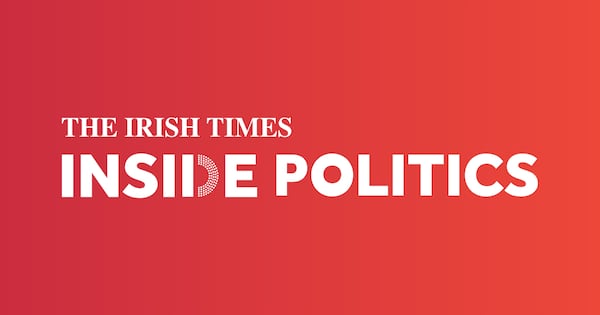While the Government has taken the wraps off its long-awaited multibillion euro National Development Plan (NDP) to tackle infrastructure deficits, it has also published its Summer Economic Statement (SES). This document is an important part of the pre-budget choreography, laying out the room available for tax cuts and spending increases. So what does it say?
Economic uncertainty
If the theme running through the NDP is housing, then in the SES it’s economic uncertainty. Driven primarily by US president Donald Trump’s tariff agenda, the Department of Finance says firms are pausing spending and households are saving more, which means forecasts of demand are being scaled back.
This comes against a backdrop of “fragmentation, economic nationalism and more broadly, deglobalisation”, Paschal Donohoe states in his introduction. He says the budget will be “framed around investment rather than consumption”, while prioritising housing and infrastructure.
The document says a “sea-change” is under way in the EU-US bilateral relationship. There is “little Ireland can do to influence the external environment” beyond advocating for trade liberalisation.
RM Block
Ireland has to focus on competitiveness challenges in infrastructure, housing and transport, as well as running surpluses, the department states.
How much is available?
The overall package will be €9.4 billion – that’s how much will be available for spending increases and tax cuts.
Of that €1.5 billion will be given over to tax cuts. It’s worth bearing in mind that if the Government goes ahead with its pledge to cut the VAT rate for hospitality, that will take up about €1 billion.
The balance of €7.9 billion will be for increased spending in Budget 2026, which makes for a 7.3 per cent increase on 2025.
How does that compare to last year?
Last year’s SES envisaged a package of €8.3 billion, with spending of €6.9 billion and tax cuts again of €1.4 billion. The spending increase planned at this stage last year for 2025 was 6.9 per cent.
The final package was quite similar, although it was supplemented by once-off measures worth in the region of €2 billion.
What happens if the economy goes south?
You can’t miss the tariff-induced fear running through the SES. However, it is silent on how exactly things might change if there’s a big economic shock, merely saying that if something hits, the Government will “recalibrate its fiscal strategy” and reduce the size of the budget package.
The SES notes that generally the public finances are set to deteriorate due to the impact of an ageing population and the costs of funding the climate transition.
How is the State’s tax take performing?
Notwithstanding the dour mood music, there’s no hiding the fact the exchequer continues to suck up money. In the first half of the year, tax revenue amounted to €49.5 billion and were ahead of the same period last year by €4.7 billion, or about 10.5 per cent (about a third of this increase is down to Apple tax money, when that is stripped out the increase is about 6.7 per cent).
The SES continues the familiar warnings about the concentration of the State’s tax take with 29 per cent coming from corporation tax, which itself is highly concentrated in the returns of a few firms. Foreign owned multinationals are also responsible for much of the income from the other big tax takes – income tax and VAT, where about half is derived from their activity.
How have things changed in recent years?
There has been a lot more spending. Spending was up by 8.2 per cent in the first half of this year, with current spending growing 6.5 per cent and capital spending up 22.5 per cent.
That’s in keeping with growth in recent years, which increased €67.3 billion in 2019 to €103.7 billion in 2024, meaning growth of 9.4 per cent annually. In 2025 that’s projected to be €106.4 billion and that spending will increase to €116.6 billion next year, split between €97.5 billion in current spending (such as public sector wages and welfare payments) and €19.1 billion on capital spending (such as public building programmes and infrastructure investment).
How about spending this year?
The SES picks out spending so far this year, which is running at €50.9 billion based on planned expenditure of €105.4 billion, latterly adjusted upwards to €106.4 billion.
Interestingly, the department is saying that based on current expenditure trends and additional measures already agreed “it is likely that additional funding will be required for a number of departments in 2025″.
Risks of a hit to corporation tax
The SES has interesting research from the Department of Finance but one scenario jumps out: modelling the impact of a hit to corporation taxes. The mandarins have drawn up two potential outcomes: a stagnation, or a return to 2020 levels by the end of the decade.
Such a tax shock would cause the exchequer balance to shift into negative territory: a stagnation would result in the exchequer balance recording a deficit of almost €15 billion, which would shoot up to more than €30 billion if things reverted to 2020 levels.












